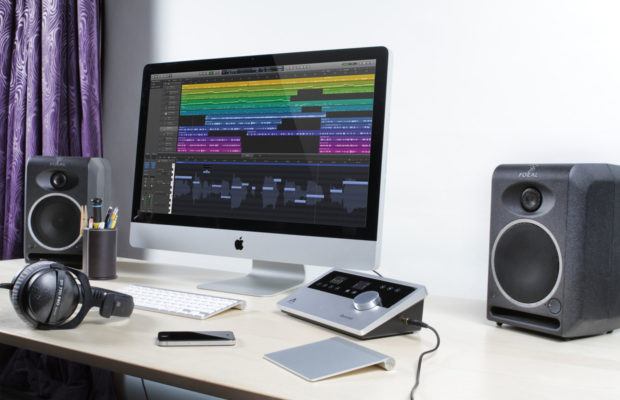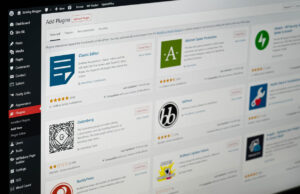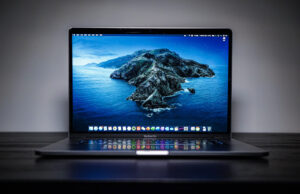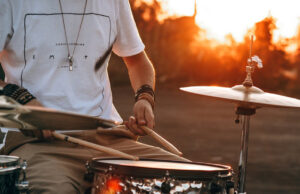How To Set Up A Basic Home Recording Studio

Today, any aspiring artist can make their music in the comfort of their home. A home recording studio that is set up correctly can yield the same results as that of music recorded in a professional studio. However, with the amount of information on the internet about home studios, choosing the right gear can be tricky. This article is meant to guide you to invest in high-quality, budget-conscious gadgets for your home recording studio.
Computer
The computer is used as the central hub for your home recording studio. It is used for mixing, recording and sharing audio tracks. You do not need to invest in a powerhouse new machine. Any computer made after 2001 is suitable to make music. Additionally, ensure the computer’s RAM is not less than 8GB. You have the option of choosing between a laptop and a desktop. In case you plan on attending shows, or to work in different locations, the laptop is probably the gadget for you. However, a desktop is not only affordable, but you also have the option of choosing monitor size.
Audio Interface
The Audio Interface is an indispensable element when setting up a recording studio. It is where you will plug in your speakers, headphones, and microphones. This gear is used for:
- Getting the sound on your external elements such as guitar and voice into the computer
- It is responsible for processing all the audio going into your computer and coming out of your PC through the Analog-to-digital and digital-to-analog converters.
Interfaces vary widely in features. The most important features to keep in mind when buying an audio interface include:
- The number of Mic preamps – By an interface with one preamp if you plan on recording vocals only, and one with multiple preamps for recording an entire band with acoustic guitars drums and people some band members.
- Choose quality over quantity – A cheap interface with many preamps will add noise and distortion to your recordings. Instead, invest in a quality interface with four or two preamps.
- Ensure the interface is compatible with your gears and software.
Recommended:
- Focusrite Scarlett 2i2 – this audio interface is relatively affordable, and it features two stereo input/output channels, high-quality conversion, and USB connectivity.
- Roland Duo-Capture EX – this is a versatile, high-quality interface with fewer I/O.
Monitor Speakers
This is a crucial element for any studio. It will enable you to judge the recording and how it sounds. The speakers should be able to produce a neutral sound that has not been altered to color or flatter your production.
Recommended:
- KRK Rokit 5s – it is relatively affordable and is known to punch above its weight.
- Focal Alpha 50s – this speaker is widely praised for its clear, neutral sound that is clean when high volume and very detailed in the mids.
Audio Mixer
This is an essential hardware when setting up a home recording studio. It allows you to adjust each input’s setting such as the microphones, keyboards, and guitar. It then routes the output to the audio interface. When purchasing a mixer: ensure each channel includes volume, 3-band equalization, and panning. Some of the most popular brands of mixers are Alesis, Behringer, and Yamaha.
Recommended:
- Yamaha EMX5014C – for its price, you get a mixer with advanced and outstanding feature like its single knob compressor and its user-friendly interface.
- Behringer XENYX 1202 – it is very budgeting friendly and gets the job done.
Headphones
The headphone is an invaluable ally in any studio. Ensure you invest in the best studio headphones that are comfortable enough to wear for several hours at a time. The headphones should be tonally neutral to offer you an accurate and unbiased perspective on your recordings. There are two main types of headphones.
- Closed-back headphones –this one is perfect for recording since it offers sound isolation.
- Open-back headphones – this one provides greater sound quality and are best used for mixing.
Your Best Picks is a great resource and offers good advice on the best studio headphones.
Recommended:
- Sennheiser HD-280 Pro
- Audio-Technical ATH-M50x
Digital Audio Workstation
Also known as DAW, this is essential creative work software in any studio. It is where you will conduct all the recording and editing of your music. The choice of the DAW majorly depends on what you want to achieve from your recordings. However, for very basic recordings, the Audacity Recording Software high recommended. It is easy to use and is free. Reaper is also inexpensive as you will use it for free for the first 60 days and then purchase it later. Its features include: full audio and MIDI capability and it can be used on a fully-fledged digital audio studio.
Microphones
Invest in a decent microphone if you do not plan on singing. Choose a studio workhorse that can be used in a variety of applications. Some of the most popular microphones include the following.
Recommended:
- SM57/SM58 – These microphones have been around since the 60s.
- The Shure SM-57 is an industry standard dynamic mic. It can be used for vocals and instruments.
Cables And Stands
You will need cables to create interconnections between your mic, and guitar to the audio interface and then to the computer. A stand will enable you to multitask, as it will hold your microphone while you use your hands to operate the software at the same time.
These are the core elements of any recording studio. Your home recording studio is one place you can make your own music without worrying about what anyone else thinks. Whether you are humming, strumming a guitar, or just clapping, your home recording studio will enable you to chop. Loop, pitch and reverse your music however you like.













 © 2024
© 2024
2 Comments